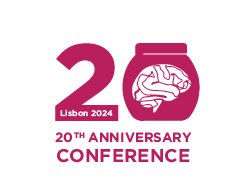
TUTORIALS
Cosyne 2024 Tutorial Session Sponsored by the Simons Foundation
TOPIC: Get some SLEAP: Automating behavior quantification using deep learning
SPEAKER: Talmo Pereira, Salk Institute for Biological Studies
DATE: 29 February 2024
TIME: 12:30 p.m. - 4:30 p.m.
In this tutorial, attendees will learn about the advances in computer vision and deep learning that have led to the recent development of tools for markerless motion capture ("pose tracking") in typical lab settings, as well as how to put these into practice to analyze complex freely moving animal behavior.
In the first part of the tutorial, we will cover: (i) the recent history of advances in pose estimation and tracking using deep learning (in humans and animals); (ii) the challenges in adapting these methods to the lab setting and how current tools approach them; (iii) the landscape of tooling for motion capture and downstream behavioral analysis; and (iv) conclude with an outlook on the remaining challenges and opportunities in the broader field of behavior quantification for neuroscience.
In the second part of the tutorial, participants will learn how to use SLEAP (https://sleap.ai), an open-source tool for multi-animal pose tracking designed for accessibility to practitioners with no technical background in deep learning or software engineering. SLEAP is in use by thousands of researchers across the world, ranging from middle schoolers to faculty, to study everything from subcellular organelles to whale sharks across diverse experimental settings.
Tutorial participants will receive exclusive access to cloud-based resources, requiring nothing but a laptop and web browser to complete the tutorial. By the end of the session, participants will learn how to go from a raw video of freely behaving lab animals, to annotating poses, training SLEAP models, tracking unlabeled data, and doing basic analyses to extract behavioral sequences and other relevant phenotypic information.
Please keep in mind that the tutorial has a limited number of participants and that a separate registration fee is required to attend. When registering for the main meeting, select the COSYNE Tutorial add-on.
Talmo Pereira
SALK
SPEAKER BIOGRAPHY:
Dr. Talmo Pereira is a Principal Investigator at the Salk Institute for Biological Studies in La Jolla, CA where he leads an independent research group as a Salk Fellow. His lab (https://talmolab.org) focuses on the development of deep learning-based computational methods for recognition and modeling of complex biological systems, with applications ranging from neuroscience to cancer and plant biology. His recent work on SLEAP (https://sleap.ai) has demonstrated how advances in deep learning and computer vision can enable quantitative phenotyping of complex behaviors through the development and application of technology for markerless motion capture. This work has been published in Nature Methods (Pereira et al., 2019; Pereira et al., 2022) and Nature Neuroscience (Pereira et al., 2020), and featured in The Scientist, Nature Lab Animal, Nature Toolbox, Quanta Magazine, Axios Science, among others.
At Salk, Dr. Pereira is a member of the Salk Cancer Center, Harnessing Plants Initiative, Healthy Aging Initiative, as well as leading the Biocomputation Initiative and the Advisory Council on Diversity. As a Latino first-generation college grad from a socioeconomically disadvantaged background, Dr. Pereira is a proud alum of the Meyerhoff Scholars Program at the University of Maryland, Baltimore County, where he received his BS in Bioinformatics and Computational Biology. Prior to joining Salk, he worked as a research intern at Google AI working on pose-based action recognition, and received his PhD in Neuroscience co-advised by Mala Murthy and Joshua Shaevitz at Princeton University where he was also a recipient of the NSF Graduate Research Fellowship, the Harold M. Weintraub Graduate Student Award, and the Porter Ogden Jacobus Fellowship -- Princeton's most prestigious graduate honor.
COSYNE Tutorials are sponsored by the Simons Foundation. Past COSYNE Tutorials can be found here.
Neurodata Without Borders Data Standard and DANDI Archive for Neurophysiology Data Tutorial
DATE: 29 February 2024
TIME: 8:00 a.m. - 9:30 a.m.
ORGANIZERS: Ryan Ly, Ben Dichter, Alessio Buccino, and Guillaume Viejo
The Neurodata Without Borders (NWB) project is an effort to standardize the description and storage of neurophysiology data and metadata. NWB enables data sharing and reuse and reduces the energy barrier to analyzing data both within and across labs. NWB is more than just a file format; it defines an ecosystem of tools, methods, and standards for storing, sharing, and analyzing neurophysiology data, including extracellular electrophysiology, intracellular electrophysiology, optical physiology, and behavior.
The DANDI Archive now has 175+ publicly available neurophysiology datasets stored using the NWB data standard, including from the Allen Institute, International Brain Laboratory, MICRONS project, and over 100 individual labs.
At this tutorial, we will teach you how to:
convert neurophysiology data to NWB and publish it on the DANDI Archive
find relevant data on the DANDI Archive and use the DANDI compute resources
read NWB data streamed from DANDI or downloaded locally
process and analyze NWB data using popular tools such as SpikeInterface and Pynapple
Bring your laptop to work along with the demonstration. To get familiar with NWB and DANDI prior to attending, please refer to this documentation. For more information about the tutorial, please visit https://neurodatawithoutborders.github.io/nwb_hackathons/Cosyne_2024/
There is NO additional fee to attend. When registering for the main meeting, select the Neurodata Without Borders Data Standard and DANDI Archive for Neurophysiology Data Tutorial.
Learn to Use the International Brain Laboratory (IBL) Brainwide Map Dataset
DATE: 29 February 2024
TIME: 9:45 a.m. - 10:45 a.m.
ORGANIZERS: Hannah Bayer, Gaelle Chapuis, and Mayo Faulkner
The IBL released a Brainwide Map of mouse brain neural activity during decision-making. We want you to use it to test your own hypotheses. In this tutorial, we will teach you to search and download datasets, do basic analyses, and give tips for more advanced computation. We will also demonstrate how to upload your analysis results to our visualization website. Bring your laptop to work along with the demonstration.
Limited to 100 people. There is NO additional fee to attend. When registering for the main meeting, select the IBL Brainwide Map Dataset Tutorial.



